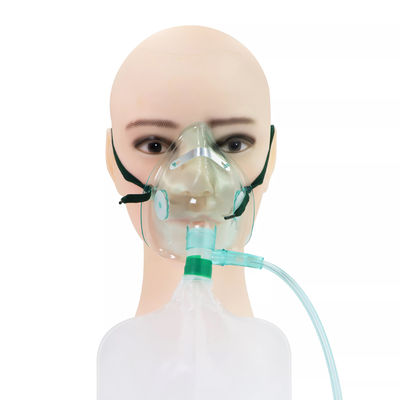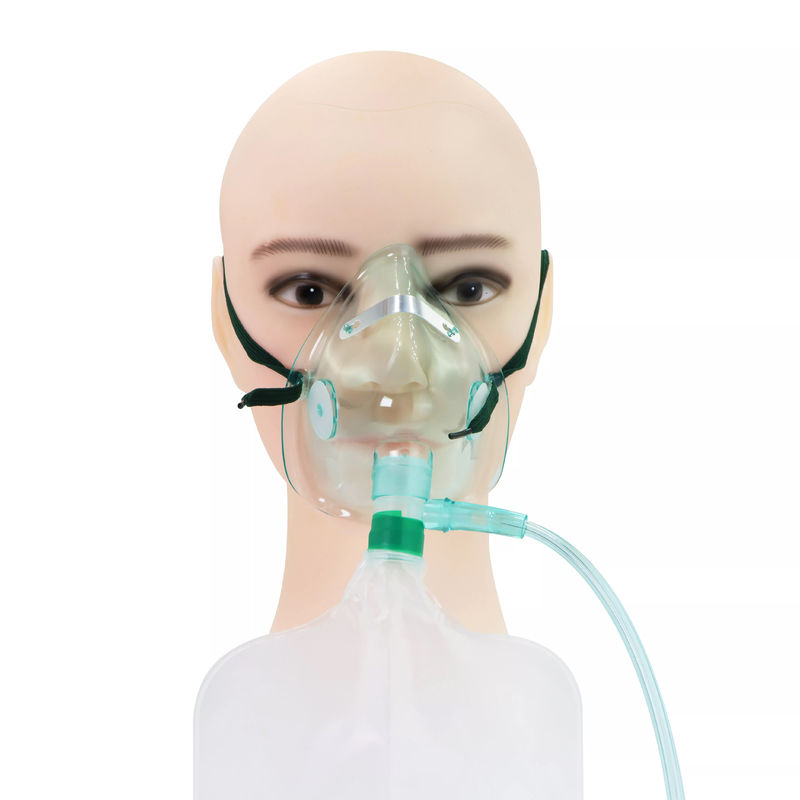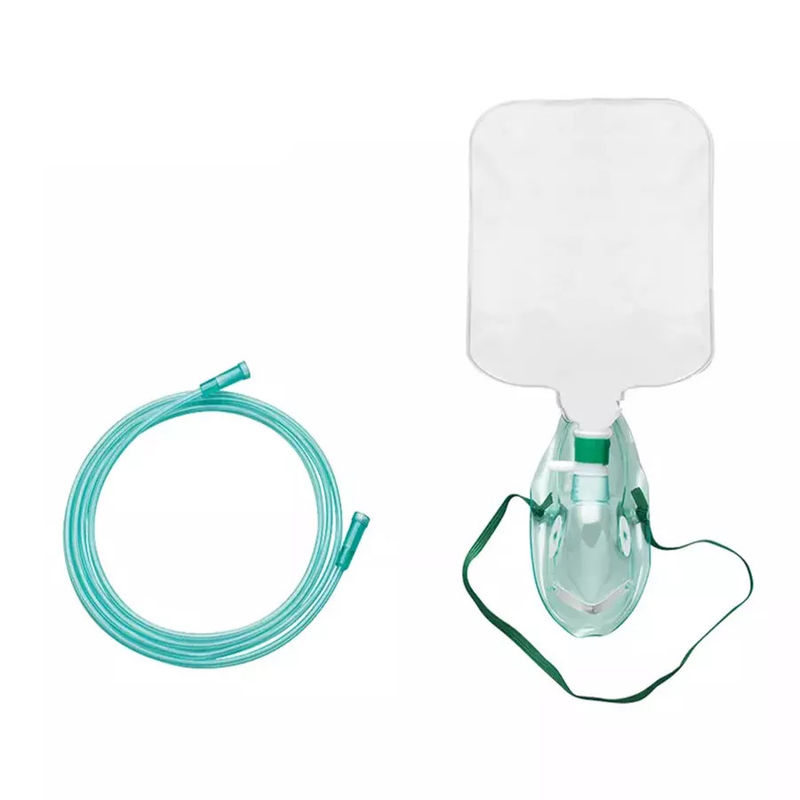-
Highlight
Non Rebreather Venturi Oxygen Mask
,Disposable Non-Rebreather Oxygen Mask
,Venturi Oxygen Mask OEM
-
Product NameNon Rebreathing Oxygen Mask With Bag
-
PropertiesMedical Materials & Accessories
-
TypeRespiratory Products
-
MaterialMedical Grade Polyvinylchloride
-
FeatureDisposable
-
Quality CertificationCE
-
ColorGreen ,Clear
-
OEMAcceptable
-
Place of OriginChina
-
Brand NameHenan Aile
-
CertificationCE
-
Model NumberSR14141201
-
Minimum Order Quantity5000pcs
-
PriceNegotiable
-
Packaging DetailsIndividually packaged
-
Delivery Time15-30days
-
Payment TermsL/C, T/T
-
Supply Ability1000000 Piece/Pieces per Month
Disposable Non Rebreather Venturi Oxygen Mask High Concentration OEM
Non-Rebreather Mask PVC Non Rebreather Mask Non-Rebreather Oxygen Mask With Reservoir Bag
A PVC (Polyvinyl Chloride) Non-Rebreather Mask is a medical device used for delivering high concentrations of oxygen to patients.
1. Non-Rebreather Oxygen Mask:
- The mask is designed to cover the nose and mouth of the patient, allowing the delivery of oxygen directly to the respiratory system.
2. Reservoir Bag:
- The mask is equipped with a reservoir bag that serves as a temporary storage for oxygen. This bag helps ensure that a high concentration of oxygen is available for the patient during each inhalation.
Key Features and Functions:
- One-Way Valves:
- The mask typically includes one-way valves to prevent the patient from inhaling exhaled air or ambient air. This design helps maintain a high concentration of oxygen during inhalation.
- Adjustable Nose Clip:
- An adjustable nose clip is often included to ensure a secure and comfortable fit on the patient's face.
- Elastic Straps:
- Elastic straps or a head strap secure the mask in place on the patient's head, providing a snug fit.
- Reservoir Bag Capacity:
- The size of the reservoir bag varies, and it is designed to hold a sufficient volume of oxygen to meet the patient's inspiratory demand.
- High-Flow Oxygen:
- The non-rebreather mask with a reservoir bag allows for the delivery of high-flow oxygen, making it suitable for patients who require a high concentration of oxygen.
- Emergency Use:
- Non-rebreather masks are often used in emergency situations, critical care settings, or during transport when high concentrations of oxygen are needed.
![]()
How It Works:
1. Oxygen Source:
- The mask is connected to an oxygen source, such as an oxygen cylinder or wall outlet.
2. Reservoir Bag Filling:
- As the oxygen flows into the mask, it first fills the reservoir bag.
3. Inhalation:
- During inhalation, the patient draws in oxygen from both the reservoir bag and the oxygen supplied directly through the mask. The one-way valves prevent the patient from inhaling exhaled air.
4. Exhalation:
- During exhalation, the exhaled air escapes through the side vents of the mask.
Considerations:
- Oxygen Flow Rate:
- The oxygen flow rate is typically set based on the patient's prescribed requirements. High-flow rates are often used with non-rebreather masks to ensure an adequate supply of oxygen.
- Monitoring:
- Patients using non-rebreather masks may require close monitoring of oxygen saturation levels and respiratory status.
- Emergency Situations:
- Non-rebreather masks are commonly used in emergency situations, such as respiratory distress, trauma, or critical care scenarios.
Product Features
* Made of medical grade PVC
* Non-toxic
* High transparency allows good visibility
* Elastic and soft property provides excellent seating, sealing and comfort
* Ergonomics design to provide perfect feeling (avoid mouth touch)
* Reasonable hook ring design to avoid uncomfortable finger touch
* Adjustable nose clip assures comfortable fit
![]()
| Product name | non rebreathing oxygen mask |
| Type | Adult/Pediatric non rebreathing oxygen mask |
| size | S,M,L,XL |
| Material | material PVC |
| Product Usage | Emergency oxygen;oxygen after surgery;respiratory therapy;intensive care |
| Certificates | ISO |
![]()
What is the purpose of the reservoir bag on the non-rebreather mask?
Non‐rebreather face masks provide tighter control of inspired oxygen than nasal cannula. A partial non‐rebreather mask has a reservoir that typically delivers 60% to 80% inspired oxygen. The reservoir bag is filled with oxygen that is emptied with inspiration.
![]()
What is a non-rebreathing oxygen mask?
Non-rebreather masks are designed to deliver a lot of extra oxygen to your airway. The normal fraction of inspired oxygen (FIO2), or concentration of oxygen in the air, in any room is about 21%. Non-rebreather masks provide you with 60% to 91% FIO2. To do this, they form a seal around your nose and mouth.



